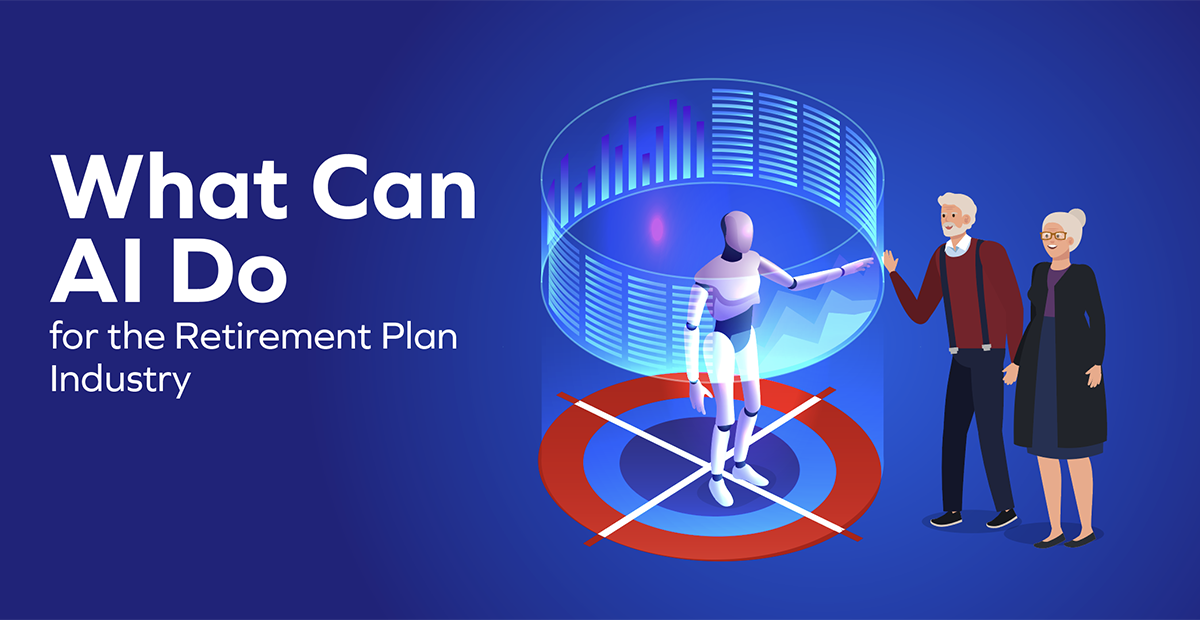
“The ability of AI to improve predictive and prescriptive financial forecasting processes will change the world of finance management.”
— Christopher Iervolino, Research Director at Gartner
The financial services industry seems to have rapidly embraced AI — automatic fraud notifications, mobile check deposits, and web chatbots are all rooted in this technology. Not just consumer banking, Nationwide Advisory Solutions’ survey found that 33% of registered investment advisors and fee-based advisors were using AI in some capacity, even two years ago. And among these respondents, 37% expect their profitability to increase substantially.
How can the retirement plan industry capitalize on digital transformation —particularly AI and ML — to give customers an elevated experience? We’ve curated some ideas.
#1 Maximize participant engagement with Chatbots
Participants don’t always seek professional advice. Not only that, they are not always aware they could seek help or even evaluate many investment options before settling for one. According to a 2018 survey, more than 40% of investors do not have any familiarity with Health Savings Accounts (HSAs); only 30% make regular contributions to HSAs; only 65% of those use their HSA money for their current health care needs, while only 8% save for the future.
It falls upon the retirement providers to discover ways to help educate participants and meaningfully engage with their retirement plan. AI can enable that!
Chatbots, robo-advisors, and other algorithm-based technologies can educate participants on-demand from the comfort of their homes. Chatbots, for example, can predict or analyze when participants reduce contributions. They can then intervene and initiate educational dialogue, keeping the participant on track.
#2 Personalize plans with intelligent insights
Each participant has his own unique need. There is a vast difference between a Millennial struggling to save for retirement while repaying their student loans and a Boomer trying to catch up to meet their retirement goals. Not only do the plans need to be designed to meet these different customers’ requirements, but any communication going from the provider needs to be customized and empathetic to their situation.
Despite our world fast becoming digital-first, the retirement plan industry still relies on paper-based processes. This doesn’t lend itself best to personalization. And it’s expensive — digitizing communication can generate as much as $500 million in aggregate savings annually. AI can offer much more.
Integrating AI into customer relationship management (CRM) systems can help providers capture and leverage big data. With this, retirement plan advisors can analyze emails and text messages to understand participant needs. Over time, you can also use predictive analytics to power proactive marketing and communication strategies.
#3 Streamline back-office tasks with automation
In just the last decade, the asset-weighted average expense ratio of DC plans fell 16 basis points, from 0.57% to 0.41%. This downward trend is expected to continue. Recordkeepers are the hardest hit by fee compression, what with increased fee disclosure, tightened fiduciary focus, and change in the ways in which payment for recordkeeping services are handled.
So, retirement providers must streamline backend operations to minimize errors and prevent fee leakage. AI/ML has come a long way in enabling this.
- Workflow automation can eliminate man-hours spent in manual work, which can be redirected for more meaningful participant engagement.
- Predictive analytics can help send personalized campaigns to participants, increasing conversions.
- Natural language processing can take information from participant interactions like texts, emails and even phone calls to build granular customer profiles for better service.
- Chatbots and robotic assistants can also help with training advisors who educate customers.
In the last few years, control is steadily shifting to the plan participant: They look for access to the information they want, on-demand, via their preferred channel. As the next generation of the workforce becomes more and more adept at technology, it leaves the retirement plan industry with no choice but to adapt to their customers’ needs.
Ultimately the goal of plan sponsors, providers, and asset managers is to ensure that every employee gets a solution tailored to their individual behaviors and characteristics. Technologies like artificial intelligence, machine learning, and automation can enable this — better, easier and faster.
